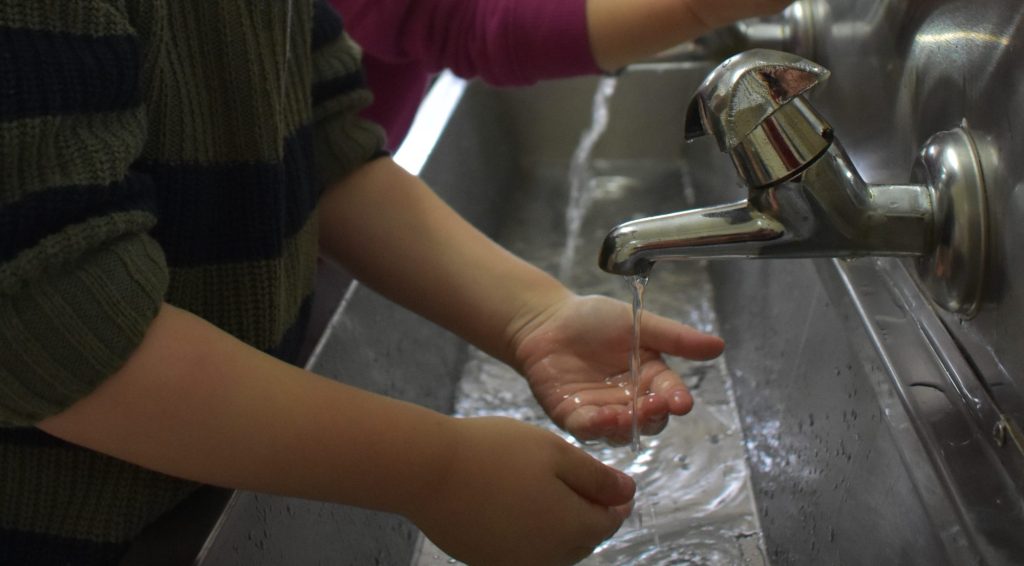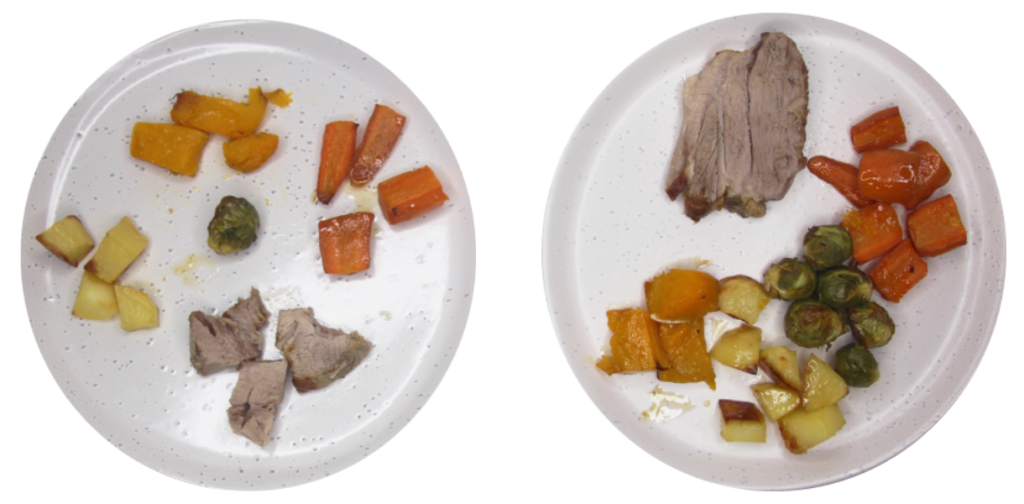Mealtimes
Summary
- Children need the opportunity to eat every 2-3 hours.
- Structured meals give children the chance to become hungry between meals and eat what they need at meals.
- Without structured mealtimes, children graze and lose touch with their appetite and fullness signals.
- Eating together in a positive atmosphere helps children learning to eat and feeling safe with new foods.
- Meals without distractions helps children know their hunger and fullness feelings.
On this page
Eat at regular times and make a safe and relaxed meal environment.
Regular mealtimes
Having regular meals with all non-food activities stopping, will help your child grow, develop and enjoy a variety of food. Children have smaller tummies and need opportunities to eat foods more often (every 2-3 hours). Your child will do best with eating, when you are eating with them. Keep a structure and then give children choices within that structure.
What do regular meals look like?
- Eating at set times every 2-3 hours.
- Three main meals, 2-3 mid meals.
- Sitting down and food being the focus.
- Eating together when you can.
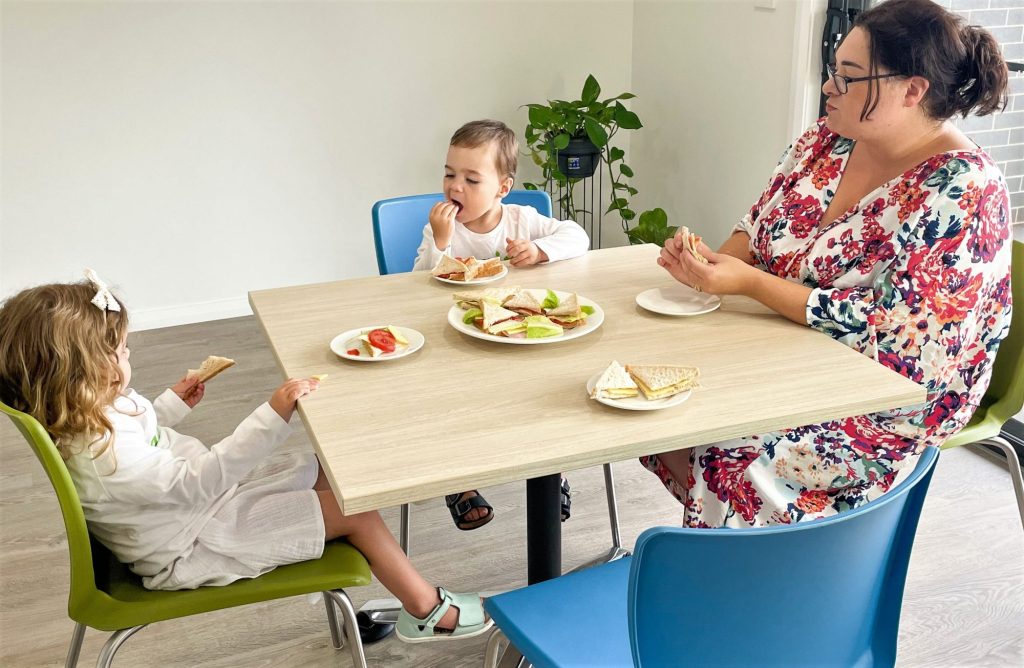
Why regular meals are important
Without structured mealtimes, children can graze, eating constantly between meals. They’ll lose track of when they’re hungry or full and may over or under eat. They’re more likely to be restless and less interested in the nutritious food you serve at mealtimes.
If you’re having trouble with a ‘fussy eater’, having regular meals is the first step. Without a meal structure you are likely to continue having battles. Grazing on food can lead to children having problems with their teeth. You’ll also find children eating constantly will lead to more work for you, cleaning up sticky hands and things dropped on the floor.
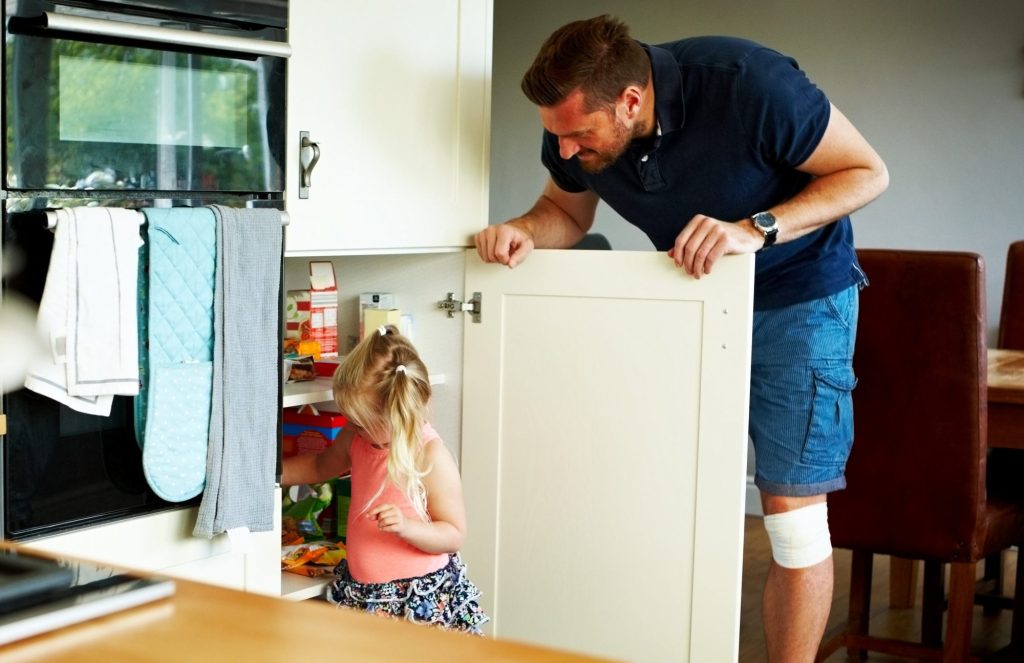
Regular meals help children know another meal or snack is just around the corner. They will learn that they can stop eating at a meal when they feel like it, as another meal will follow. If they don’t eat anything at one meal, you can relax and not worry, knowing they will have an opportunity to eat at the next meal, in a couple of hours.
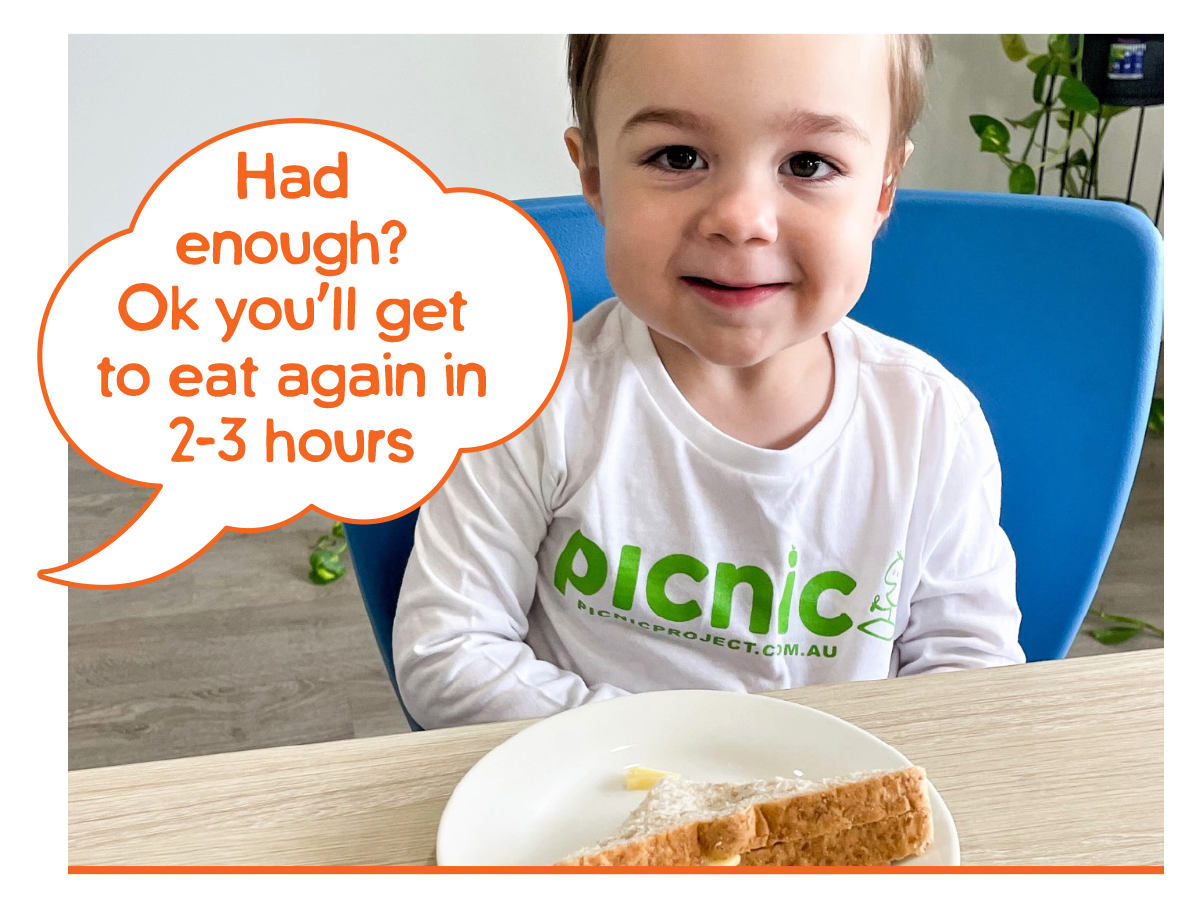
Regular meals allow you to monitor what they are eating.
When children are grazing and eating on the run, it’s more difficult to keep track of how much and what they’ve eaten. Knowing what they’re eating helps you work out if there’s a food group you need to include more/less or serve at a different time.
Both main meals and mid meals (snacks) are important.
Make sure you are thinking about which foods to provide at every meal. We never know which meal they’ll be hungrier for. A mid meal doesn’t have to be sitting at a table, it could be on park bench, at the beach. As long as we all stop, sit down and eat without distractions.

What about dessert?
Dessert comes straight after dinner. Dinner is likely to have more challenging foods (meat and veg) and dessert with less challenging, sweeter and easier to eat foods. Problems occur when parents want their children to eat their meal before they have dessert. Children start realising they can hold out from eating dinner with more challenging foods, as less challenging foods will be offered straight after.
Some suggestions?
1) Have dessert a couple of hours after dinner, or long enough that it breaks the association between dinner and dessert (or supper). If there is a break between dinner and dessert, there is time to become hungry again.
2) Serve a portion of dessert with dinner. This can sound a bit controversial, but it is a really good way to get children used to dessert foods being ‘no big deal’ and children can learn to eat favourite foods sensibly.
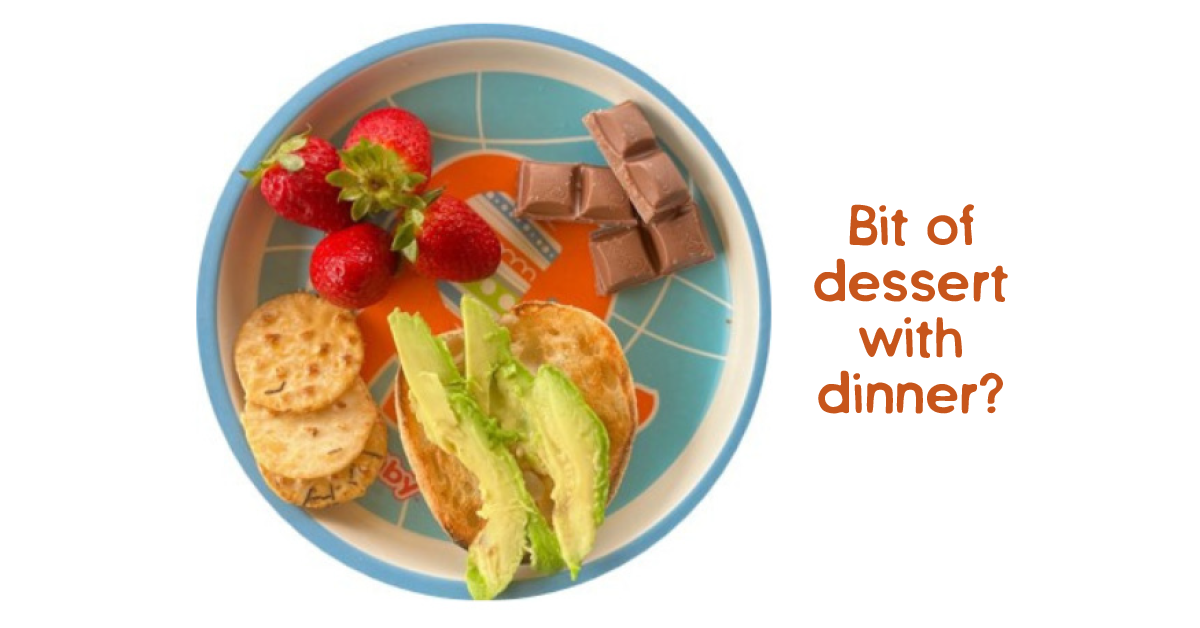
Safe and supportive mealtimes
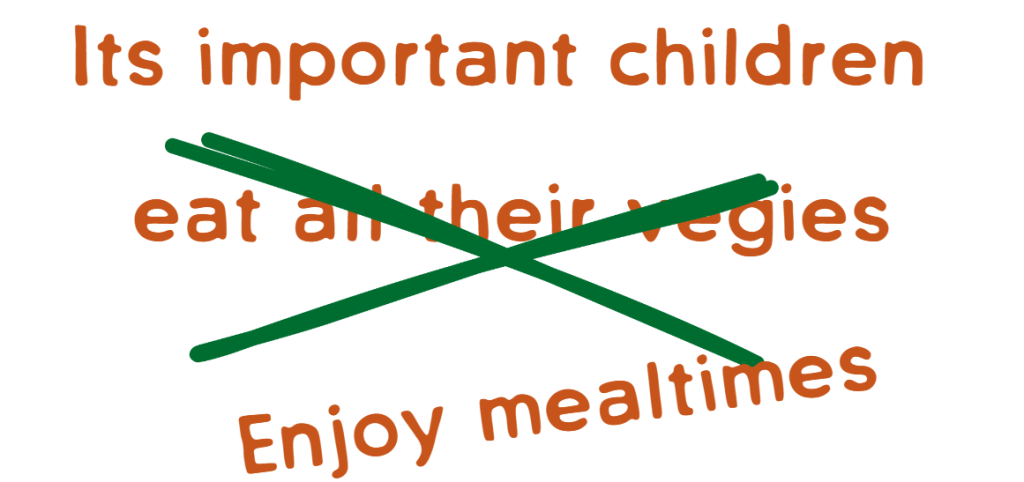
A positive mood at mealtimes helps to support children’s learning to eat. Don’t use this time to bring up negative topics likely to upset people or use mealtimes for disagreements with a partner or other children. Your child will get upset. Once they are upset the likelihood of a positive mealtime becomes much less.
Your child will not want to try new foods and their appetite will be overcome by their feeling of being upset.
Remember to keep to your feeding roles. Trying to control your child’s eating with pressure will turn dinner into a battle ground. A lot of meals have been ruined with fights over vegetables!
No pressure at meals results in a better atmosphere
The meal preparation routine
It’s time to start getting them used to the meal readiness routine. Give them a verbal warning “Rachel, it’s dinner time now, shall we wash our hands?” Then bring them to the table.
Distractions at meals
Don’t have any distractions at the table that compete with eating or play games to get them to eat. It’s all about the people and the food. Your child will then stay in touch with their hunger and fullness feelings and know when to stop eating.
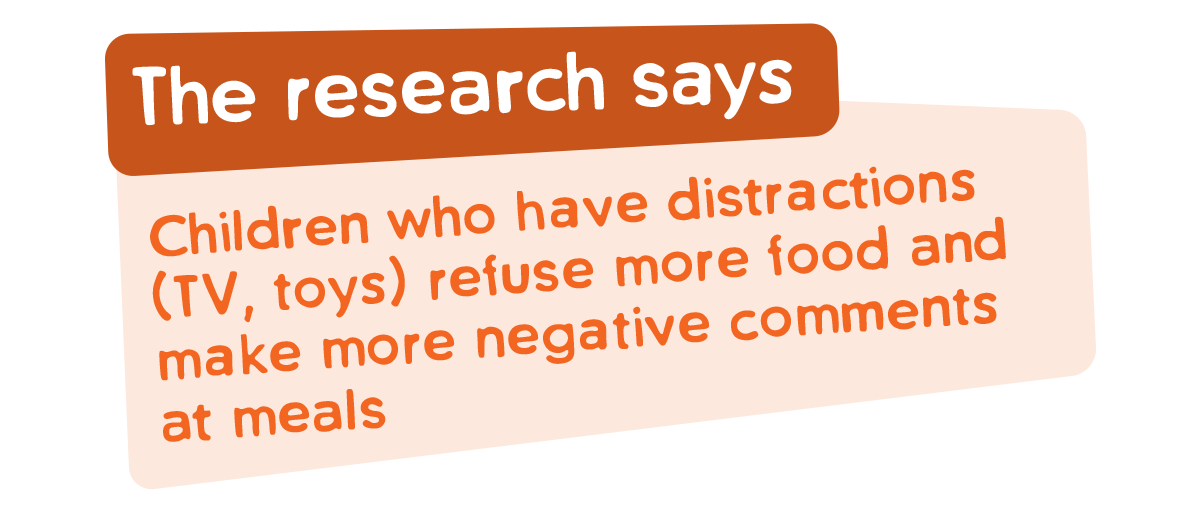
Have you heard of the term mindless eating in adults? This is when we eat while doing another activity and not thinking about how we are feeling. We can learn this early in life by learning to eat with distraction during mealtimes.

Parents can say their children will eat more in front of screen. They can get distracted from their hunger and fullness feelings, something that won’t be helpful long term.
Turn off the TV, put down books, toys, games and phones at the table.
Meals, messiness and learning
Getting messy with food can help them to become familiar with different textures, smells, colours, shapes and self-feeding by touching food and putting it near/in their mouth. Stay calm and patient, it’ll help your child enjoy mealtimes.
If it becomes all about throwing food, then we’ll know that they’ve had enough, and the meal should end. You can make cleaning up easier by spreading a mat under the highchair or putting the chair on tiles.
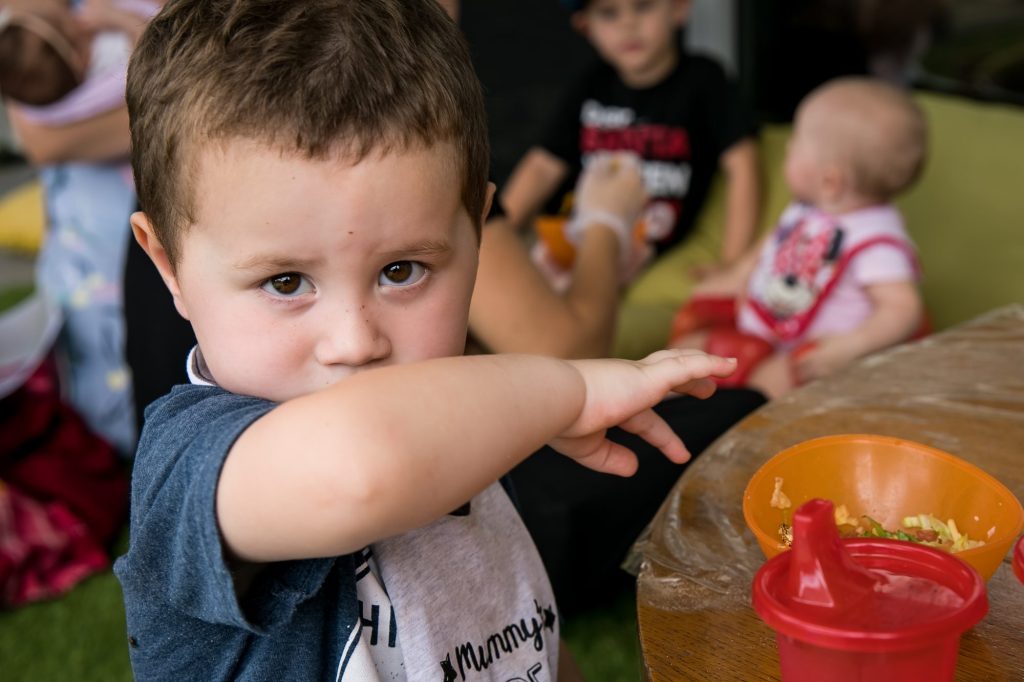
Some babies are just slow eaters, so you might let meals go longer if they are still going. If your child hasn’t eaten or shown interest in eating for some time, it might be time to call it quits on the meal. 20 – 30 mins minutes is usually enough time for children to become satisfied. There’s no need to drag it out, they can eat again at the next meal.
Could they be dragging out mealtimes to avoid eating a certain food? Is this their only ‘one on one’ time with you? This could be their way of getting your attention.
Family meals and role modelling
The most important ingredient at mealtime is YOU!
Get them involved with family meals from the start. Try not to have two eating times so you can eat with them and not just feed them. You might need to eat a little bit earlier and they eat a little bit later. Eating with everyone is not always possible, but when we can, eat together.
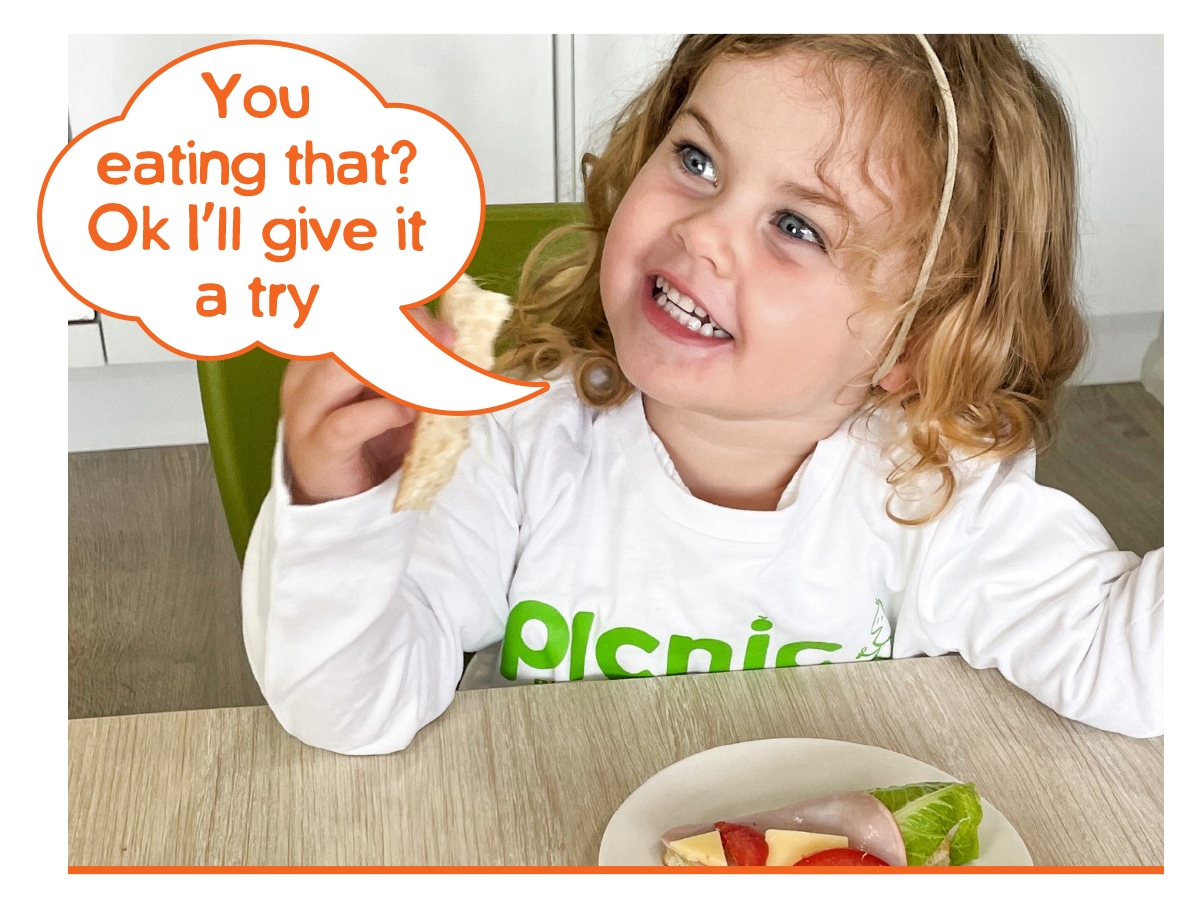
They learn from watching you and will have more courage trying new foods when they see you eating them first. When you’re all eating the same food, they’ll know it’s safe and may be more willing to have a try.
Parents who eat more fruit and vegetables have children who eat more of these foods themselves. That also goes for less healthy foods… you eat more they eat more! Don’t expect them to eat a food if you don’t.
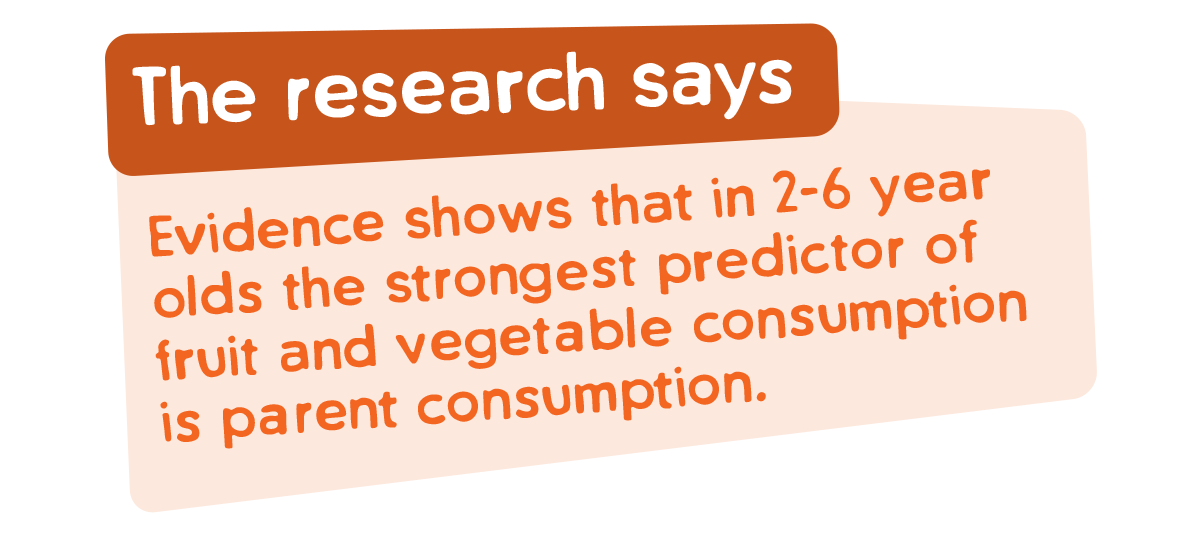
What you do at the table is important. Without pressure they’ll learn to eat the foods you do and their relationship with food will likely end up being similar to yours. Children learn through watching other people, they’ll see how you select food, eat and enjoy. If your eating is not ideal or you are ‘dieting’, be conscious not to pass on these negative attitudes to your child, keep them to yourself.
Don’t expect them to eat a food if you don’t.
Mealtime talk
It’s ok for children not to want to eat particular foods, but it’s important we teach children to politely decline food rather than making a fuss. “No thank you” as opposed to “yuck”, these are important lessons to pass on to children.
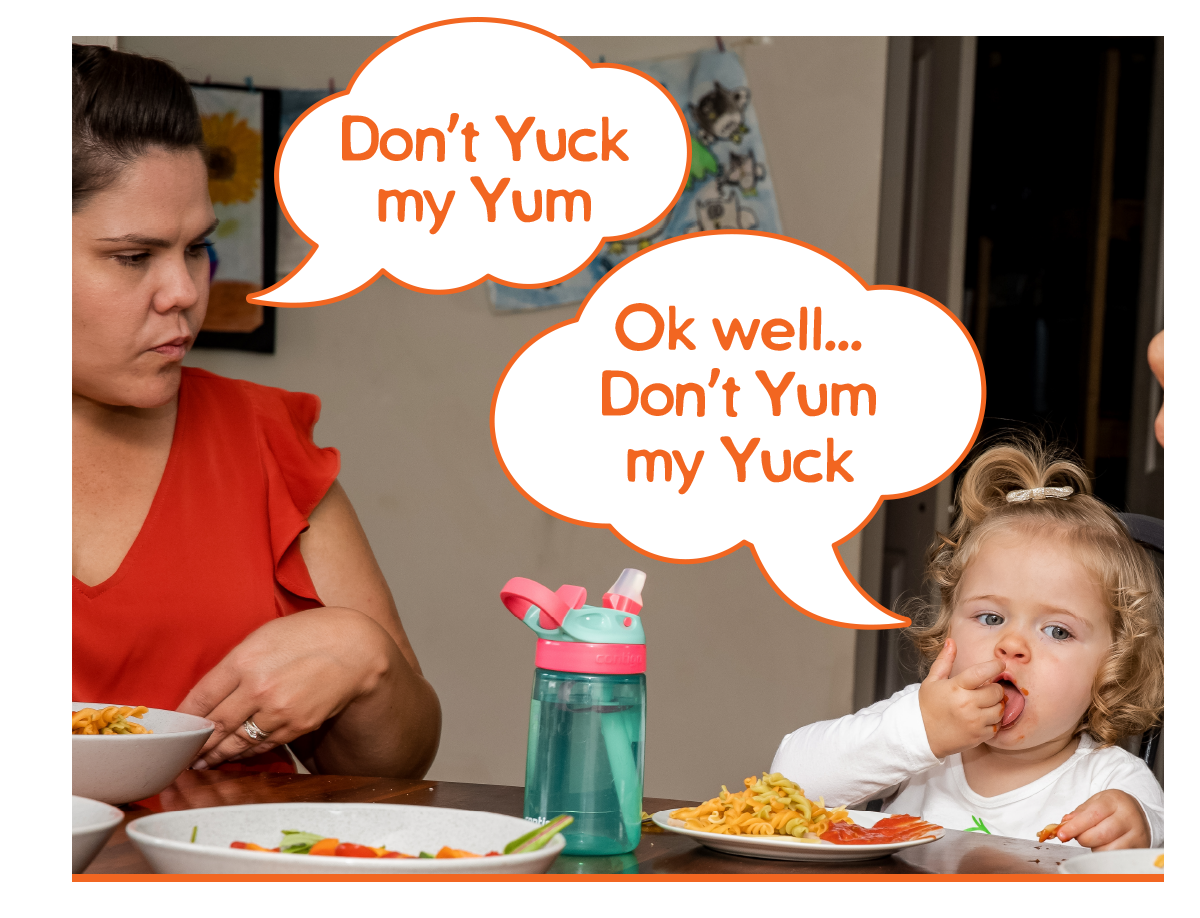
Who else can be a role model?
Anyone who eats with your child can influence eating behaviour: carers, brothers, sisters, grandparents, your friends, other children and childcare workers. You need to consider who else eats with your child and what your child is learning from them. This can sometimes prove to be challenging if not everyone is on board.
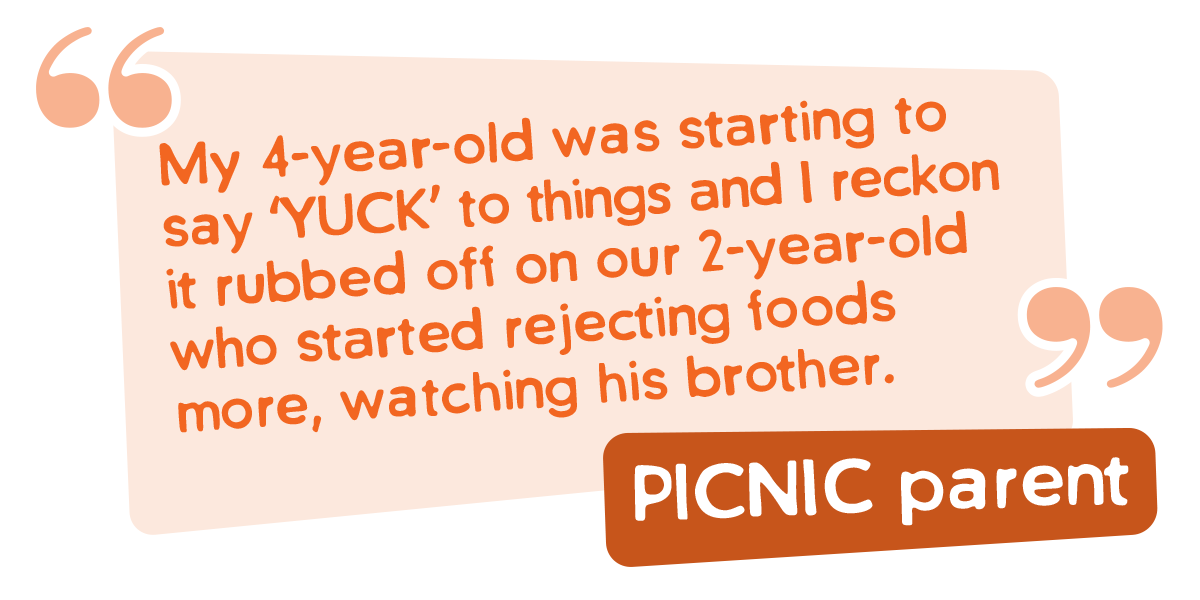
Other children and especially older children can be a big influence. Have you ever experienced your child eating things at childcare that they wouldn’t eat at home? This is likely to be the influence of other children or staff eating the same thing in a non-pressured environment. Is there too much pressure at home?
Create opportunities for others to role model their eating. Think of what you do with your child and who you hang out with. Older peers like older brothers/sisters or older children at childcare can have a positive influence on children’s eating.
Family style meals
Family style meals describes when a range of foods are on the table, and everyone gets to choose something they feel like eating… but we are all eating the same meal. It is everyone’s own choice what they eat.
Everyone chooses their food from the same foods
Family style meals are a great way for you and your child to practice your feeding roles at mealtimes. Your child can have a modified version of what you are eating. A few tips…
- everyone at the table gets the same foods.
- provide both familiar and unfamiliar foods to your toddler.
- provide preferred foods with less preferred.
- you choose food not your child, don’t make any substitutes.
- your family’s meals don’t always have to be about home-cooked meals, make getting together the first priority.
You make the menu choices so you might as well make it food you like. You need to stay motivated with your job as food provider, so enjoy.
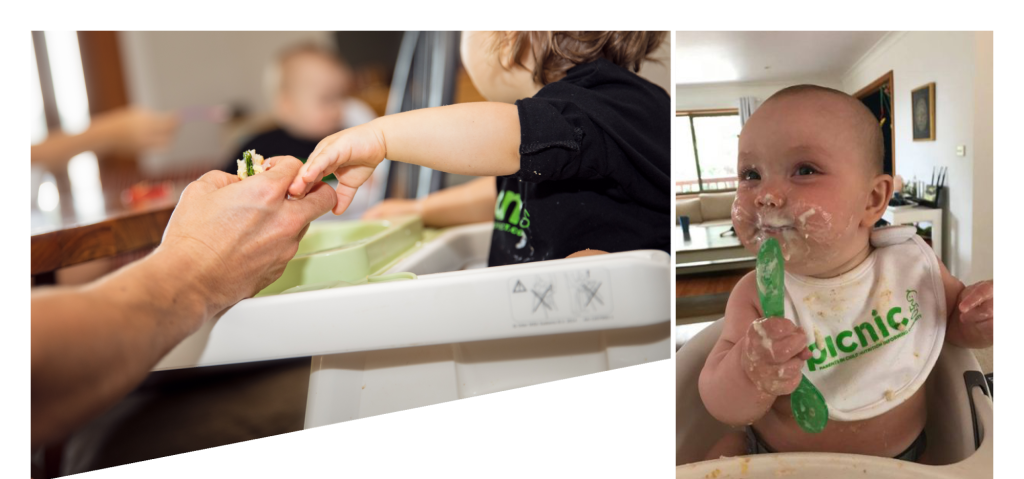
If there is stress at meals your child may be overcome by feeling upset, they will lose their appetite and won’t want to try new foods
- Frankel LA, Powell E, Jansen E. The Relationship between Structure-Related Food Parenting Practices and Children’s Heightened Levels of Self-Regulation in Eating. Child Obes. 2018;14(2):81-8.
- Satter E. Eating Competence: Definition and Evidence for the Satter Eating Competence Model. Journal of Nutrition Education and Behavior. 2007;39(5, Supplement):S142-S53.
- Fiese BH, Foley KP, Spagnola M. Routine and ritual elements in family mealtimes: contexts for child well-being and family identity. New Dir Child Adolesc Dev. 2006(111):67-89.
- DiSantis KI, Hodges EA, Johnson SL, Fisher JO. The role of responsive feeding in overweight during infancy and toddlerhood: a systematic review. Int J Obes (Lond). 2011;35(4):480-92.

